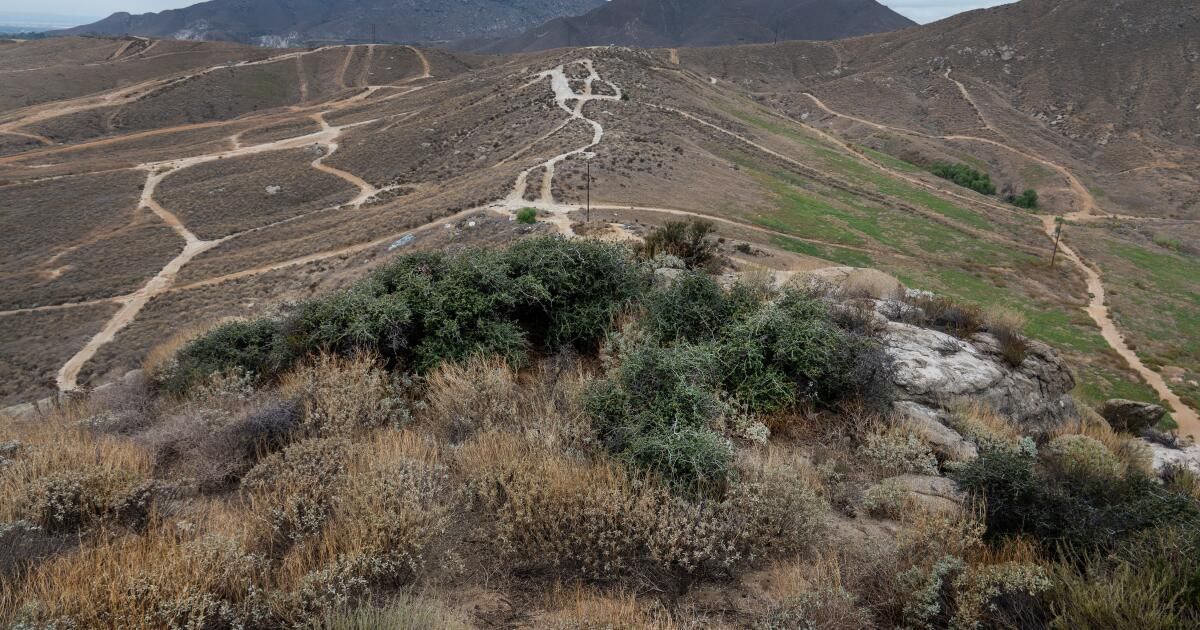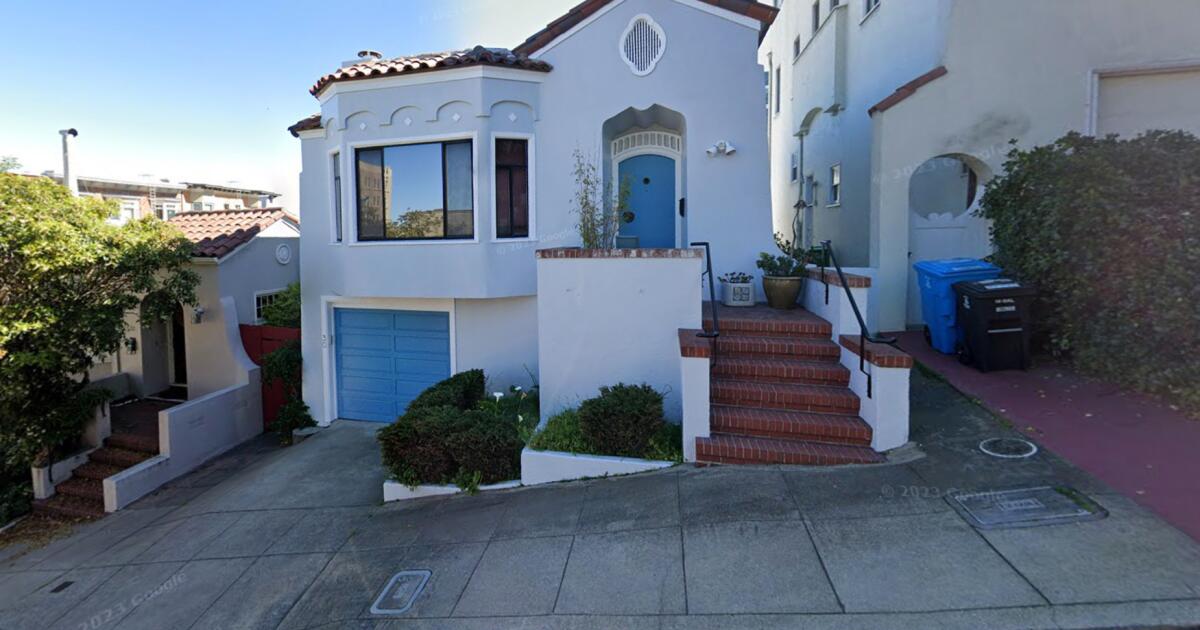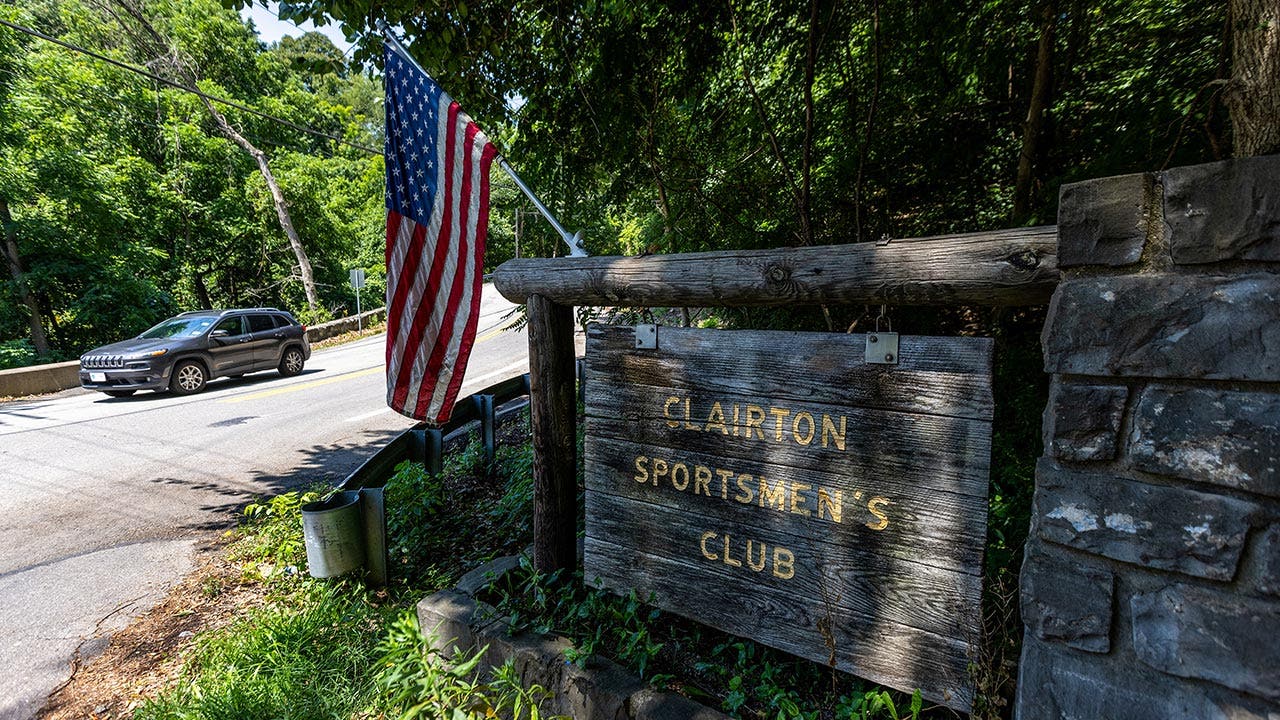An Inland Empire city has approved a development project within 450 feet of the third-oldest known living organism in the world: a sprawling, shrub-like oak tree that is more than 13,000 years old.
Although environmental groups and some city council members argued that scientists are only “guessing, at best” about the development's potential impact on the tree, the Jurupa Valley City Council ultimately approved the project in a 3-2 vote.
Supporters said they believed the project had taken appropriate steps to protect the world's oldest oak tree and that the development was unlikely to harm it.
A complementary conservation plan would relocate the 30-acre rock outcrop that houses the Quercus palmeri or Palmer Oak, to a Native tribe. The Kizh Nation, Gabrieleño Band of Mission Indians, has agreed to care for the land.
However, another native tribe says the tree lives on its homeland and has been prevented from participating in the negotiations.
“This is a very difficult decision, but it is a responsible project that will bring benefits to everyone,” said Councilwoman Leslie Altamirano after hours of emotional public testimony.
Aggressive and shocking reports on climate change, the environment, health and science.
“The best thing is that we have the opportunity to set a precedent and return the land to the indigenous people. So I want to make sure that, in my lifetime, I was able to do that,” she said before voting in favor of the bill. “That’s why, tonight, I will support the Kizh Nation.”
The room erupted in applause.
“We understand the importance of the Jurupa oak and have always been committed to its conservation,” said Brian Hardy, a representative of the developer Richland Communities. The plan, which has the support of the Kizh Nation, “will provide protection that does not exist now or in the previously approved project. We are pleased that the City Council understood that and voted to approve the project,” he said in a prepared statement to The Times.
The project calls for nearly 1,700 homes and a light industrial park. A coalition of environmental groups fear the pavement could create a heat island effect that would further stress the tree, which already lives in extreme conditions. They are also concerned the development could deplete or contaminate the tree's water source, or damage its root system.
In response, the city ordered additional studies on the roots and heat in June. Environmental consultants concluded that the effects of the heat would be minimal — hundreds of feet separated the tree from any parking, they said — and the developer planned to take steps to keep the pavement cool.
The consultants also said the roots did not extend to the construction site or reach any groundwater that could be affected by the development.
“I think we have a pretty good idea of where the oak is getting its water and an estimate of how deep its roots are,” said Michael Tuma, a senior biologist at FirstCarbon Solutions, which led the project’s environmental impact studies. “There are other arguments that the opposition has put forward that are increasingly far from reality and from what the science supports.”
The biologists decided not to map the tree's root system, which would require invasive measures that could damage or kill it. Instead, they based their estimate on previous studies of similar trees.
Without conclusive data, the coalition wants the city to preserve more land for the tree by reducing the light industrial buildings and business park planned in its surroundings.
“All of us in the coalition who are concerned about the tree are not opposed to the development project,” said Tim Krantz, conservation director for the Wildlands Conservancy. “We are only concerned about the areas immediately adjacent to and on top of the oak.”
A botanist at the University of California, Riverside, noticed the tree in the late 1990s. He thought it was a fish out of water: The oak was growing in a much warmer, drier location than the species' typical habitat.
He and a colleague hypothesized that the tree might have first sprouted during the end of the last ice age, when the climate was much colder. In a 2009 study, they determined that the oak was roughly 13,000 to 18,000 years old.
The tree has survived for millennia by producing genetically identical shoots, or cloning, meaning the tree's original trunk is long gone but its genome persists. One of the paper's authors compared the tree to the Ship of Theseus, a mythical vessel that has been completely rebuilt from new parts.
Yet the tree has been a fixture of the landscape since mastodons and saber-toothed cats last roamed Southern California. For the area's native tribes, the oak played a central, sacred role in seasonal ceremonies and daily life.
In a plan developed by the developer, the city and the Kizh Nation, the parcel of land surrounding the oak will be given to the tribe before construction begins in the area closest to the tree. The tribe will also receive $250,000 to conserve the land.
However, the Shiishongna Tongva Nation, Crown Band of Gabrielino Indians, says the land is their homeland and that they have been excluded from discussions with the city.
The oak is a “sacred ceremonial site for our people in particular,” said Laura Jaime, a tribal cultural anthropologist with the Shiishongna Tongva Nation. “We follow the course of the Santa Ana River, so this sacred ceremonial site reminds us of time immemorial.”
Because the land is now privately owned, they have been forced to hold ceremonies elsewhere, probably since the early 19th century, Jaime said.
The city sent out a request for input on the project to a handful of Native tribes in 2015 and 2019. But due to the strain of the pandemic, the Shiishongna Tongva Nation did not have the resources to participate, Jaime said.
Since then, the tribe has been in communication “via email correspondence with the city, with the various departments, with the planning commission and, for that matter, with the city council,” Jaime said. “We were subsequently ignored.”
Environmental groups, working closely with the Shiishongna Tongva Nation, will likely continue this battle in court.
Since the Kizh Nation identified the tree as a cultural resource, the city was required by law to keep information about the tree confidential, including its exact location. This has prevented biologists and outside experts from seeing key environmental studies, including the impact that construction vibrations would have on the tree.
“It’s kind of a classic developer strategy of creating an ‘us versus them’ situation,” said Krantz of Wildlands Conservancy. “In this case, between the two tribes… It’s downright perverse.”
Fact Sheet
Towards a more sustainable California
Receive Boiling Point, our newsletter exploring climate change, energy and the environment, and be part of the conversation – and the solution.
You may occasionally receive promotional content from the Los Angeles Times.












